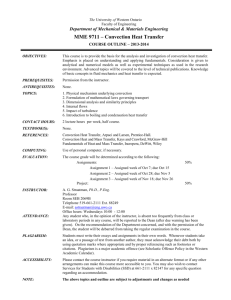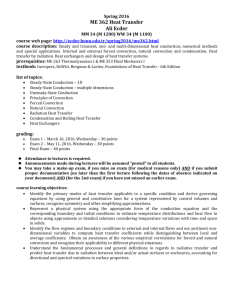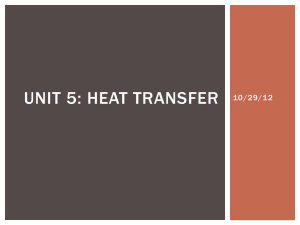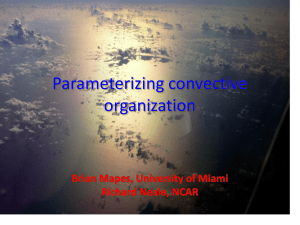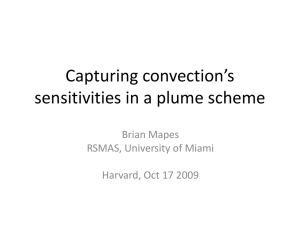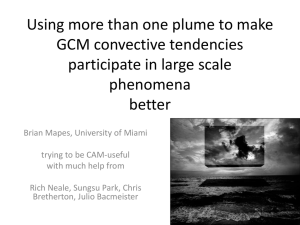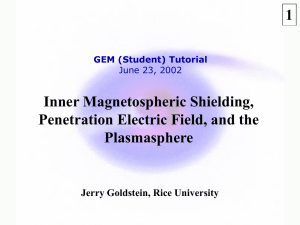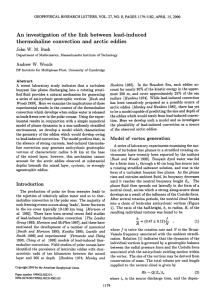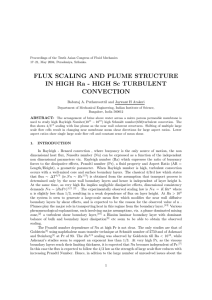Summary of T&H 1999
advertisement
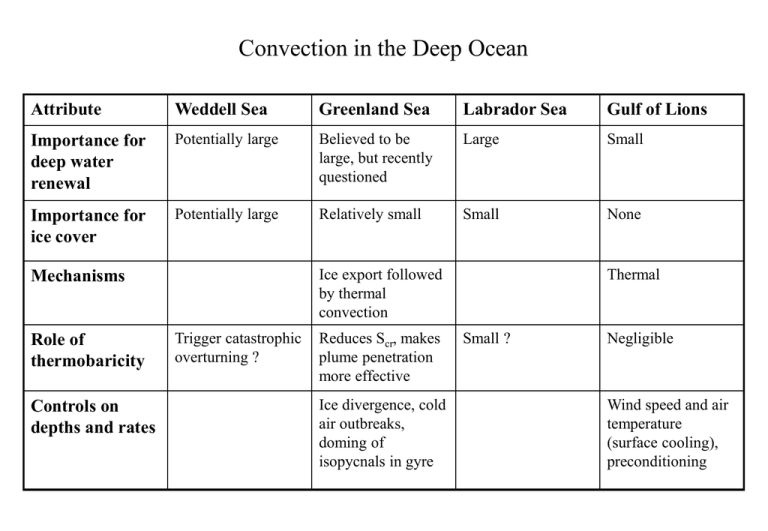
Convection in the Deep Ocean Attribute Weddell Sea Greenland Sea Labrador Sea Gulf of Lions Importance for deep water renewal Potentially large Believed to be large, but recently questioned Large Small Importance for ice cover Potentially large Relatively small Small None Ice export followed by thermal convection Mechanisms Role of thermobaricity Controls on depths and rates Trigger catastrophic overturning ? Reduces Scr, makes plume penetration more effective Ice divergence, cold air outbreaks, doming of isopycnals in gyre Thermal Small ? Negligible Wind speed and air temperature (surface cooling), preconditioning Summary of Thorkildsen & Haugan DSR 1999 • Steady state plume model including nonlinear equation of state, dynamic pressure and both components of earth rotation. • New scaling of plume radius. • To achieve deep convection: Small elevation in density O (10-4 kgm-3) is sufficient; ambient must be only weakly stratified; thermobaricity is the most important driving force. • Inserting a warm and saline layer 600-1400m with same dr/dz gives increased penetration for plumes which otherwise would have stopped in the layer, and decreased penetration for plumes which would have traveled through. Summary of Løyning & Weber JGR 1997 • Infinitesimal perturbations can trigger thermobaric instability. This is shown by classical linear stability analysis applied to Boussinesq type equations with expansion in d/Ha where d is layer thickness, as well as from nonlinear 2D equations. • Thermobaric convection, i.e. when thermobaricity is the sole cause of convection, asDT < bDS < (as + a1d) DT, gives asymmetric cells with stronger circulation in the lower part. This is shown from linear approximation and from numerical solution of nonlinear equations. • (Weber & Løyning 2000 Techn. Rept. Univ. Oslo: ”Thermobaric effect on symmetric instability” show that thermobaricity destabilises stratified, geostrophic flows. Small-amplitude rolls have centers of circulation which are shifted towards the lower part of the fluid layer).


